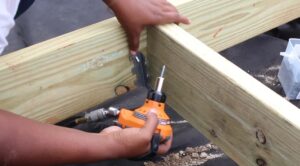Asbestos in a natural fibre that for many years, indeed centuries, was used extensively in the construction industry, mainly due to its resistance to fire, and it wasn’t until the mid 1970s that is became apparent just how dangerous asbestos actually is. This naturally occurring mineral comes in 6 different forms and it’s thin, needle-like fibres can cause serious harm if inhaled, and once inside the lungs, asbestos fibres cause serious diseases like mesothelioma and asbestosis, both of which can be fatal.
Extensively Used in Construction
Because asbestos is fire resistant and also very durable, it was used extensively in building, with pressed sheets that can be cut to size, and even though asbestos use was banned in Australia in 2003, there are still thousands of buildings that contain this potentially lethal substance. Indeed, asbestos removal is a very busy industry, with specialised companies that only work on removing asbestos from homes, offices and factories.
Home Improvements
If there is asbestos in your home, providing it is not disturbed, it poses no real risk, yet if you were carrying out a home improvement and came across asbestos, you should not attempt to remove it. The best thing to do is call in a local asbestos removal specialist, who can safely remove all traces and you can proceed with your project, safe in the knowledge that this harmful substance is no longer present in your home.
Asbestos Testing
Many building materials could contain asbestos, and it might not be evident, and in a situation where you wish to remove building material, but are unsure whether or not it contains asbestos, call in a company that offers asbestos testing. They would take away a small sample and have it tested for the presence of asbestos, which is much safer than assuming everything is fine, when perhaps it is not.
What Are the Dangers?
Mesothelioma is a very aggressive form of cancer that is largely caused by the inhalation of minute asbestos fibres, which could remain dormant within the lungs for years and suddenly cause the disease to emerge. The other deadly disease associated with asbestos is asbestosis, which, as the name suggests, is caused by the presence of asbestos in a person’s lungs. The slivers are so tiny that even sniffing a material that contains asbestos can cause inhalation, and once these fibres are inside the lungs, they will remain there.
Don’t Take Any Chances
If you suspect that you have asbestos in your home, do not touch it or try to remove it. Call your local asbestos removal company (there are many in all parts of Australia) and ask them to come and test for the presence of asbestos, and should the findings be positive, leave the removal to the experts, who have both the know-how and equipment to safely remove all traces of asbestos from your home.
When removing partition walls or ceilings, there is always a chance that you will come across asbestos, so be vigilant and if in doubt, call in the specialists.




